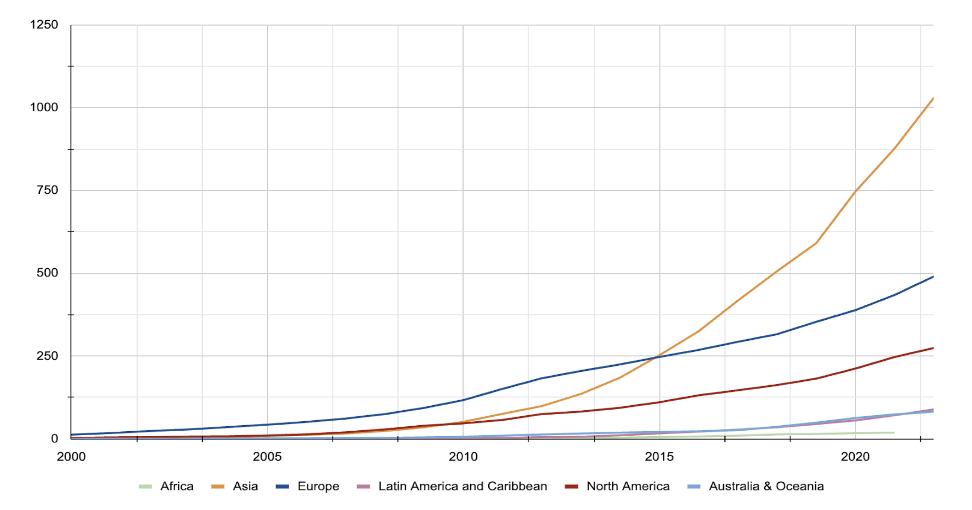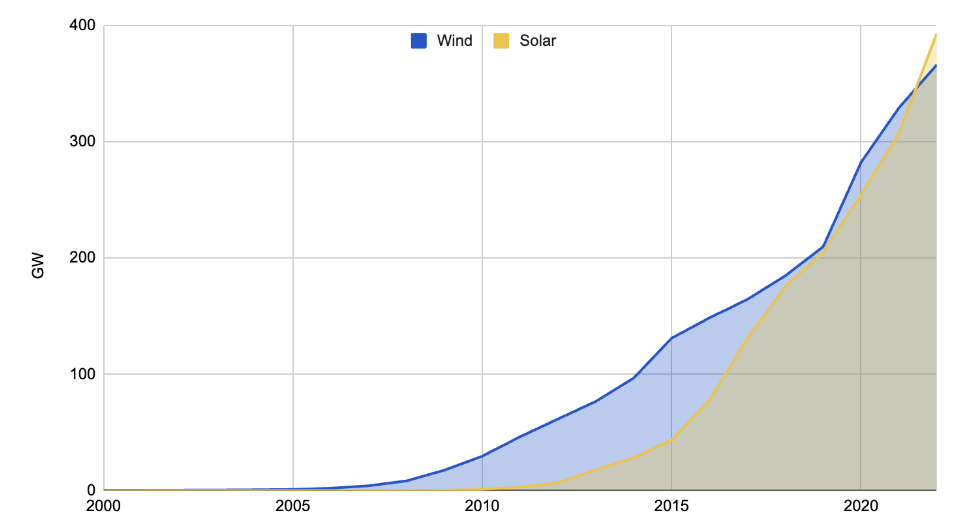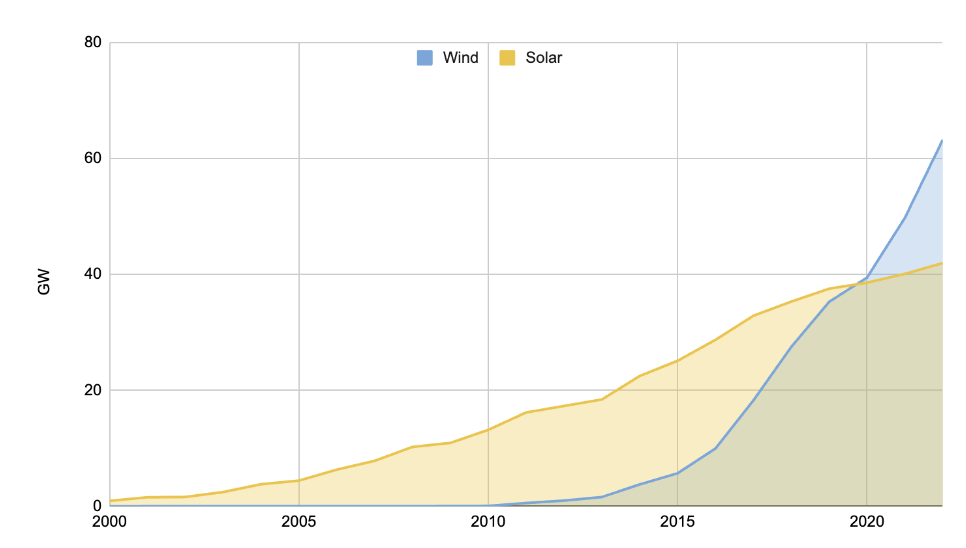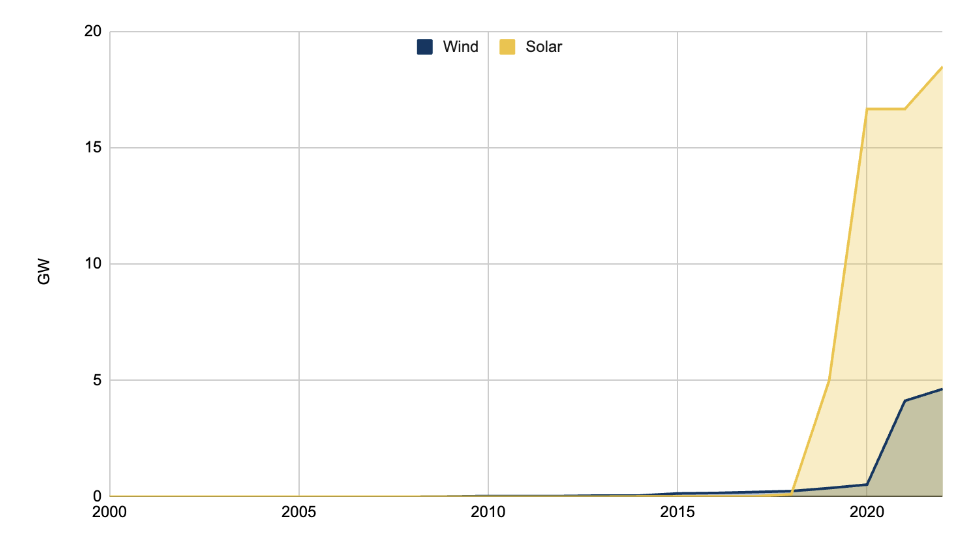Despite perceptions to the contrary in much of the western world, Asia is leading the way in rolling out renewable energy (RE). The region accounts for almost half the world’s RE capacity, with 1,630 GW, more than twice the US (709 GW) and three times Europe (489 GW), according to the International Renewable Energy Agency (IRENA).
What’s more, its lead is growing – capacity increased by 12% last year, a rate matched only by the Middle East and more than double that of the US. Unsurprisingly, Asia has dominated investment in renewables, attracting two-thirds of global funding last year, more than half a billion dollars. This figure is set to double by the end of this decade, according to research group Wood McKenzie.
Major countries have made impressive pledges. China wants renewables to supply a third of its electricity by 2028, while India plans to meet half its energy needs with renewables by 2030. Meanwhile Vietnam has committed to generating between 30% and 39% of its power from RE and Japan wants renewables to account for 38%-38% of power, both by 2030.
Wind and solar
The focus is very much on wind and solar power, with more than half of global capacity added last year installed in Asia. Indeed combined wind and solar capacity has increased fourfold since the Paris Agreement in 2015. China has led the way, accounting for three-quarters of all additions. Here the region again outstrips its counterparts, with wind and solar capacity increasing 35% a year compared with 29% in Europe and 27% in the US.
Wind and solar capacity (GW)
Source: Ember Electricity Data Explorer, 2022.
China dominates
The pace of the rollout in China has been remarkable – between 2000 and 2022, on average the country doubled its solar capacity every two-and-a-half years and its wind capacity every one-and-a-half, to the point where it now accounts for almost 40% of global capacity. Annual investment in RE almost doubled between 2017-22 to $275bn. China also dominates the market for clean technologies, such as solar panels and heat pumps, with a 60% market share.
China wind and solar capacity
Source: Ember Electricity Data Explorer, 2023.
But it’s not just RE production where China leads the way. The country’s investment in electrified transport increased more than fourfold between 2017 and 2022, to $234bn. The results are impressive. China is the largest market for electric vehicles (EVs) in the world, accounting for 58% of sales last year, and is set to become the world’s biggest exporter of cars by the end of this year, thanks in part due to demand for electric cars, which account for almost 40% of the country’s car exports. China is also the world’s biggest exporter of electric two-wheelers, with sales increasing almost 80% between 2015 and 2022. Over the same period, the number of electric two-wheelers on China’s roads jumped by 60% to more than 200 million. By 2020, that number is expected to grow to more than 300 million.
Indian intent
India has also been investing heavily in renewables, to the tune of $11bn in 2021. From 2000 to 2022, on average annual wind capacity increased by 22%, leading to a more than sixfold increase, while solar capacity grew 18% a year. RE now accounts for one fifth of all electricity generation and the government plans to add another 500 GW by 2030, almost three times current capacity.
India wind and solar capacity
Source: Ember Electricity Data Explorer, 2023.
Meanwhile, India has big plans for EVs, with the domestic market set to grow by 50% by 2020, making it one of the fastest growing in the world. The country is also a leading manufacturer of electric two and three-wheelers, with four million electric motorbikes and scooters on the roads last year, a number expected to jump to 28 million by 2030.
Vietnam transforming
Renewables have also seen an extraordinary rise in Vietnam, with solar capacity soaring from just 0.1 GW in 2018 to 18.5 GW in 2022. Meanwhile, wind capacity has grown sharply to 4 GW. As a direct result, fossil fuels’ share of the country’s energy mix has shrunk from 83% in 2019 to 42% in 2020.
Vietnam’s wind and solar capacity
Source: Ember Electricity Data Explorer, 2023.
The country is the second largest electric two-wheeler market in the world, with 1.8 million motorbikes and scooters accounting for 10% of market share. The market will continue to grow rapidly, partly due to the government’s target to end the sale of new combustion engine vehicles by 2040.









